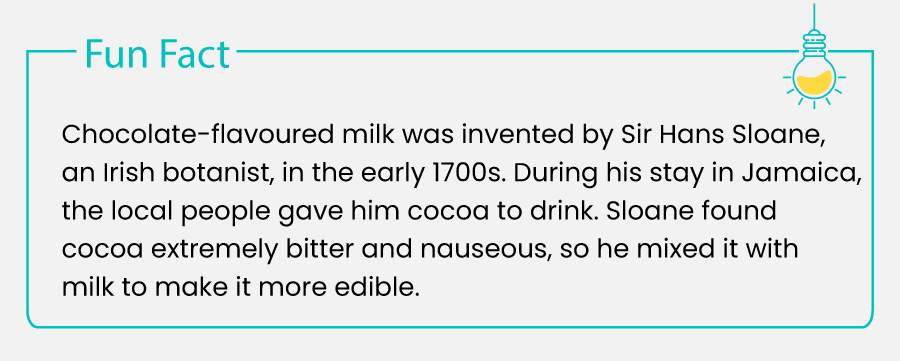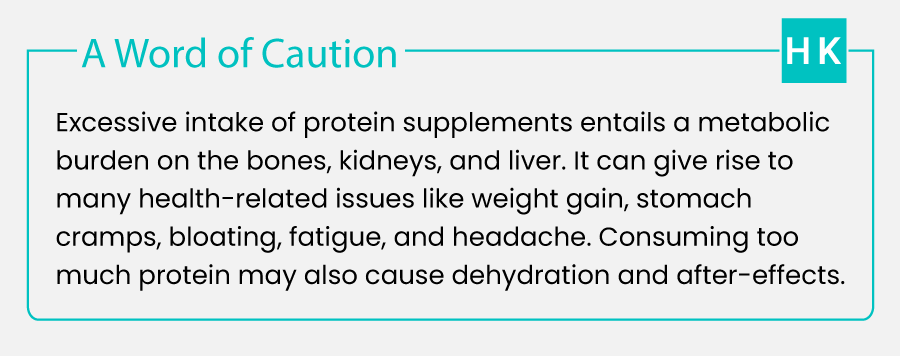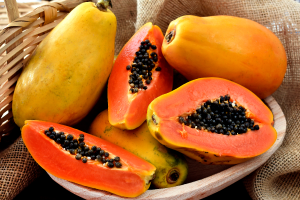

Flavoured milk is a favourite treat among young children. Flavours like Kesar badam milk, dairy milk flavour, mango shake, and more; there is a range of flavours to woo different taste buds. But as we grow older, these flavourful delights are replaced by protein shakes. This is because the latter is widely propagated as a post-workout drink. But do protein shakes outdo flavoured milk? Let’s find out!

What is Flavoured Milk?
Milk’s nutrition plays an essential role in the growth and development of the body. It is considered a whole food as it contains all the vital nutrients the body requires. But its bland taste is not liked by many, especially kids. Thus, flavoured milk emerged as a superhero to ensure that we get the required nutrients without much fuss.
Flavoured milk is a dairy beverage with added sugar, flavourings, and food colourings. Badam, chocolate, and strawberry are the most preferred flavours. Like unflavoured milk, flavoured milk also provides carbohydrates, protein, fluid, and electrolytes that help refuel the body and repair the muscles. But in addition to enhanced taste, flavoured milk contains a higher number of calories and has increased sugar and sodium content as compared to unflavoured milk.
Flavoured milk can be prepared at home using fresh fruits, nuts, and chocolate. The commercially available flavoured milk is processed and pasteurised to increase shelf life. However, they are available in a variety of flavours to meet different taste preferences. One can also opt for milk flavour straws. These are straws filled with flavour beads which add flavour to a glass of plain milk.
What is Protein Shake?
A protein shake is a dietary supplement that provides the body with a rich dose of amino acids, the building blocks of proteins that are vital for muscle gain, weight loss, and injury recovery. It is widely prevalent among professional athletes and weight loss seekers as a post-workout drink. A protein shake is available in liquid form or a protein supplement in powdered form.
Protein shakes are both flavoured and unflavoured. The unflavoured ones have a neutral taste. Whereas, the options for flavoured protein shakes include chocolate, cookies and cream, peanut butter, strawberry, and vanilla, to name a few.
While the liquid protein shake is a ready-to-drink beverage, the protein shake powder supplement is typically mixed with water and blended in a shaker bottle or blender to get a smooth and creamy beverage.
Flavoured Milk vs Protein Shake – Nutritional Value
The nutritional value between flavoured milk and protein shakes can be compared on the following parameters:
1. Calories
For an average adult, depending on daily activity levels, the daily calorie intake ranges between 1,800 and 2,400 calories a day. Thus, people looking to lose weight are over-conscious about their calorie intake. A 250 ml serving of flavoured milk contains 200 calories, while the same size serving of 100% whey protein contains 120 calories.
2. Protein
Milk is an important source of protein for the human body. Proteins are crucial for human growth and development. They are revered as the building blocks because they play a major role in muscle and bone development and make up a large percentage of the internal body organs. The recommended dietary intake of proteins is linked to age, gender, and activity levels. One must consume at least 0.8 gm of protein per kg of body weight per day. And when it comes to meeting the daily protein intake requirement, every 250 ml serving of flavoured milk confers 8 gm of protein, whereas the same size serving of 100% whey protein contains 24 gm of protein.

3. Fat
What we eat is burnt as fuel. The caloric surplus is stored as fats. The fat make-up in our body ranges between 5% – 30% of body mass. While skinny people and sports enthusiasts have a lower fat percentage, overweight and obese have a fat percentage above 30. Furthermore, people with a sedentary lifestyle have a higher fat constituent as compared to people with moderate to high activity levels. While 250 ml serving of flavoured milk contains
5 gm of fat, it is just 1 gm in a 100% whey protein shake. The proportion of saturated fat is also higher in flavoured milk than in a protein shake.
Flavoured Milk vs Protein Shake – Health Implications
Young children prefer flavoured milk and the yummy taste adds to the already nutrient-rich milk. But what also comes along is an increased dose of sugar, artificial flavours, and food colourings. These aspects have a direct bearing on health when someone is considering flavoured milk and protein shakes as after-sport nutrition. The health implications of flavoured milk vs protein shake are as follows:
1. Weight Management
For someone embarking on a weight loss journey, cutting down on calories and fats and including a high-protein diet is essential. Proteins take longer to digest and give a prolonged feeling of fullness, helping cut appetite. But as discussed above, flavoured milk is high in calories and fats but low in proteins when compared to a protein shake.
2. Injury Recovery
Proteins are crucial for making up the body’s soft tissues. They also play a key role in controlling inflammation. Muscle loss is more prevalent in injured parts as they are usually immobilised. But having a high-protein intake supports injury recovery. Proteins help in building new muscle cells which aid in muscle repair and maintenance. It also improves insulin sensitivity and thus speeds up the healing process. When it comes to protein powder, a trusted protein supplement will confer higher proteins than an equal serving of flavoured milk.
3. Muscle Development
Amino acids, the building blocks of proteins, are vital for muscle development. As rigorous workouts cause tiny muscle fibres to tear, amino acids present in proteins help repair these muscle fibres. As the process of muscle tear and repair continues, the muscles grow bigger and stronger over time. As protein shakes are loaded with proteins, it goes without saying that they confer a higher protein dose per serving than flavoured milk.
4. Nutrient Boost
Both flavoured milk and protein shake are an excellent source of rehydration and help replenish fluids and electrolytes immediately after workouts. In addition to this, flavoured milk contains high amounts of minerals and vitamins like calcium, potassium, phosphorus, vitamin A, vitamin D and B vitamins like B2, B3 and B12. On the other hand, protein shakes are typically loaded with proteins – including all the nine essential amino acids the body cannot produce. Although they are fortified with minerals and vitamins, the concentration of the nutrients is way less than in flavoured milk.
Advantages of Flavoured Milk
Flavoured milk offers the following health benefits:
- Slow-paced muscle recovery
- Building lean muscle mass
- Delectable flavours like Kesar badam milk and chocolate
- Ideal for healthy weight gain
- Vitamin and mineral boost
Advantages of Protein Shakes
Protein shakes are helpful in the following ways:
- Fast-paced muscle recovery
- Quick building of lean muscle mass
- Ideal for weight loss diet plans
- Packed with all nine essential amino acids
- Fortified with minerals and vitamins
- Ideal for lactose intolerant people

Conclusion
Flavoured milk or protein shakes — The decision will depend upon personal preference and health goals. If you are a fitness enthusiast looking for lean muscle building or working out regularly to shed a few kilos, a post-workout protein shake will aid in faster muscle repair and recovery. It will add to endurance, ensuring regular and consistent workouts. On the other hand, for people looking for healthy weight gain, flavoured milk offers the right amount of calories and fats in addition to proteins.
It is advisable to consume both flavoured milk and protein shakes within the recommended limits. But excessive intake of protein shakes can have severe health implications as compared to flavoured milk.




